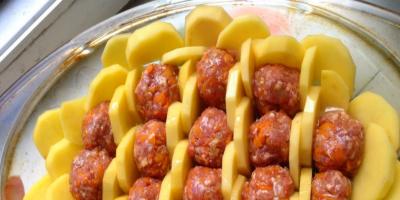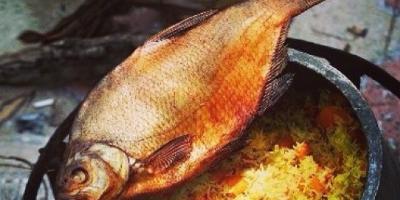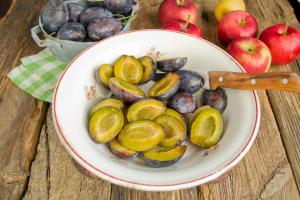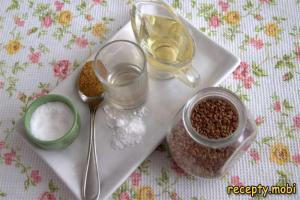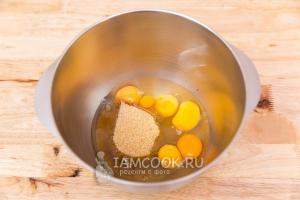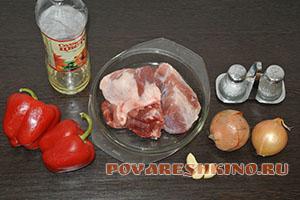Culture
Have you ever wondered why so many people love Olivier salad? And why exactly this dish is so popular in the territory of the former USSR, associated with New Year's festivities?
And even those who can’t stand Olivier are well aware of the peculiar sacred meaning of this salad for almost everyone who loves the New Year holiday (that is, for the majority).
The special status of Olivier salad as a dish for a holiday is perceived by us as such from early childhood. And it seems as if it had always been like this. In fact, the popularity of Olivier in our country is a vivid example of this kind of random product placement.
Where did this dish even come from? Much has been written about its origins, but too much artistic Most stories seem to raise a lot of questions.
So how did the “bourgeois” salad penetrate the life of almost every citizen of the former USSR? Why exactly Olivier salad became my favorite New Year's dish for many millions? Let's talk about everything in order.

The history of the birth of Olivier salad usually begins with the history of the birth of a man, a great hereditary chef. And this man was a certain Lucien Olivier. It is believed that Lucien was born in Moscow somewhere at the turn of 1837-1838 (nothing is known about the more exact date of birth of the future “father of Olivier salad”).
Sources that mention the name of Lucien Olivier usually immediately take us to the mid-60s century before last, when wealthy Muscovites and guests of the city showered their attention on a restaurant called the Hermitage.
It was in this restaurant that visitors first tried the prototype of the Olivier salad, named after the supposed name hereditary cook(and part-time manager) of this establishment, Lucien Olivier. But this is where the first questions arise.
There is no evidence that Lucien Olivier was a hereditary chef
You may be surprised, but there are no reliable sources that would confirm that restaurant manager Lucien was a great cook (and even a hereditary one, as can be read in some “historical” studies), does not exist.

What do we even know about Lucien? It is believed that the man was French or Belgian French origin. However, here too we encounter with the same problem: no matter how hard you try, you will not be able to find a reliable primary source for this information (and many enthusiasts and historians have done this on purpose).
What do Moscow archives say about people with the surname Olivier who lived in this city at that time? It is known for certain that in the address book of 1842 year there is a mention of only one Olivier, who then lived in Moscow. Perhaps a “great chef” was born in his family?
It is unlikely. The likelihood is that it was in the family of this Olivier, a merchant and owner of a hairdressing salon named Osip, who then grew up four-year-old Lucien, the future creator of the super-popular salad, is practically nil: although Osip had four children and three of them were boys, none of the children matched either by age or name.
Was there even a man named Lucien Olivier?
For most of the fragmentary information that we have about Lucien Olivier, as the manager of the Hermitage restaurant, we are indebted to such a person as the writer Count Vladimir Gilyarovsky. And it would be possible to refer to his information, if not for one “but”: Gilyarovsky was at one time called nothing less than a collector of urban legends. Legends and rumors.

And, nevertheless: if you believe the same archival sources (namely, they are the most reliable), the Hermitage restaurant, which opened in luxury hotel "Hermitage" on Trubnaya Square in Moscow, like the hotel itself, were under the management of a certain... Nikolai Olivier. Another Olivier? Where did he come from?!
Nicholas Olivier was first mentioned in 1868 in this Moscow guidebook in hospitals, retail stores, various enterprises, educational institutions, moneylenders' offices, as well as hotels and restaurants.
Who was the first to talk about Lucien Olivier as a chef?
The writer Gilyarovsky, in his descriptions of the life and traditions of Muscovites of those years, described the Hermitage establishment as very popular and elite place. And it was he, Vladimir Alekseevich Gilyarovsky, who described the talents of chef Olivier, who allegedly cooked exclusively delicious salad, which made Lucien popular throughout Moscow.

Gilyarovsky personally, of course, could not see this, since he was born only in 1855; his book “Moscow and Muscovites” was published in 1926. And now the most interesting thing: any other information sources, about which we would have learned about Lucien Olivier as a talented hereditary chef, are simply absent.
However, the manager of the Hermitage named Lucien existed, being, quite obviously, Nicholas, who changed his name to a more French one. For what? Perhaps to match "Frenchness" of the restaurant itself. One can only guess about the motives of Nicholas (Lucien), since the man died in 1883, leaving behind almost no data.
Could a hotel and restaurant manager personally undertake the preparation of dishes in the restaurant of the hotel he manages? Hypothetically, such a possibility cannot be excluded, however no evidence We do not have this fact, except for the existence of a beautiful legend about the hereditary cook Lucien Olivier (and many speculations built on the basis of this legend). But we have Olivier salad.
Real Olivier recipe
First Olivier salad
The question immediately arises: perhaps there was no Olivier salad then? There was, although the history of Olivier, like a salad, no less confusing than the story of Lucien Olivier as a chef. There were many delicious dishes, which the sophisticated Moscow noble public actually tried for the first time in the Hermitage restaurant in the hotel of the same name.

By the way, another Russian writer, Pyotr Dmitrievich Boborykin, who lived precisely in that era and visited the Hermitage restaurant, sincerely admired incredibly huge kitchen this institution in its articles published in the popular monthly. A French manager, allegedly born in Russia, was also mentioned there.
At the same time, as Bobrykin assured, insisting on this information, in the kitchen of the Hermitage restaurant, which hosted all the nobility not only of Russia, but also of all of Europe, about six dozen chefs. Did it make sense for a hotel manager to take over the stove?
However, let's return to the salad, or rather, to its prototype!
The Hermitage restaurant served a very tasty and varied dish (perhaps really a salad), which later became known as by the name of the manager restaurant. Perhaps it was called that right away, in the establishment’s menu, although there is no indication of this.
What did the first recipe for this dish look like, did it look like a salad at all? unknown! Everything else that can be found about the Olivier salad in connection with the Hermitage restaurant is stories, legends and speculation.
One of these legends says that the restaurant’s chef (according to the same legend, the chef was Lucien Olivier) served his new culinary masterpiece, which was not a salad at all. Rather, it was something like this ensemble of various products, generously sprinkled with Provençal sauce. The dish allegedly included crayfish necks, partridges, hazel grouse, lanschig, veal tongue and much more, including separately presented potatoes and eggs.

Some of these products are actually used as ingredients for modern Olivier salad. But, as the legend goes, visitors to the Hermitage did not appreciate the exquisite taste of the artist and maestro Olivier, mixing all the ingredients together. And the next day, the cook, upset by the ignorance of the public, served the same dish, but in a mixed form. Like, this is how the Olivier salad appeared.
I want to believe in this memorable legend, but there is one caveat (at least): the dish itself was supposedly called “Game Mayonnaise.” However cookbooks the middle of the century before last presented us with a lot of dishes made from pork, beef, hare, and other living creatures under this name. It seems that mayonnaise became a sauce later.
Where did you disappear to original recipe Olivie?
After Olivier's death, the Hermitage restaurant was repeatedly repaired, completed, rebuilt, and then finally closed in 1917. Were any recipes lost? It is obvious. Was there a recipe for that famous Olivier salad among them? As you yourself understand, there are no direct indications of this. But the story didn’t end there, it just began.

Beginning in 1884, recipes began to appear in various culinary and semi-culinary publications around the country that were allegedly references to “the same one.” famous recipe Olivier salad, popular among the Moscow nobility and city guests. Recipes changed from edition to edition and from publication to publication.
The authors of each subsequent recipe could make changes to the “original” recipe, replacing, for example, hazel grouse with chicken, recommending Provencal sauce. By the way, standards for mayonnaise, as for the sauce we are used to, called “Provencal”, were already developed in the Soviet Union. By the way, there were no preservatives in it, except for vinegar from alcohol.
Needless to say that among the writers culinary recipes, as well as among publishers and editors, there were many not the most talented people who counted, first of all, on to earn money? Without trying too hard to look for any historical truth, some even made up the ingredients of the “first Olivier” (adding, for example, black caviar).
Salad for the New Year's table
Soviet Olivier
The glory of the Olivier salad as “a unique dish with incredible taste and nutritional qualities, the recipe of which was irretrievably lost,” is simply could not sink into oblivion. And she didn’t sink. In famous restaurants Soviet Union many chefs have tried to capitalize (in a good way) on the long-standing glory of the Olivier salad.

This can be called speculation purely conditionally, since the chefs of the establishments sincerely tried to cook something close to the original(at least close to what was published in old pre-revolutionary culinary publications).
Ideologically correct Olivier
It is known, for example, that in the mid-30s of the last century in some restaurants in the capital, salad a la Olivier was no longer served with expensive ingredients, echoes of the bourgeois past (take the same hazel grouse!), but with ideologically verified red carrots. And it was called “Stolichny”.
Perhaps the story about the “ideologically verified” carrots is also a legend, and the chefs were simply forced to try new ingredients, including the same green pea instead of capers. And the sausage that appeared in the dish was the result of attempts to reduce the cost of the final product.
It must be said that by that time the Olivier salad was known under several names: “Russian salad”, “Winter”. Again "Stolichny". There is no clear justification for this. You can come across fabrications on the topic that “Russian” differs from “Olivier” in that one uses meat, and the other uses sausage.
However, there is no logic in this, given the previous narrative. Most likely, in the Soviet public catering system they tried to get away from the not entirely popular name “Olivier”, trying not only new ingredients, but also new names. As we see, one, the second, and the third have taken root. There are even names like “Game Salad.”

How did doctor's sausage appear in Olivier?
After the end of the Great Patriotic War, the Soviet people actively restored the destroyed country. But even among the harsh everyday life, sometimes I wanted to arrange a holiday for myself - with festive dishes and drinks. Olivier unexpectedly became an attribute of the festival. But, since chicken fillet It was expensive, and cheaper doctor's sausage began to be used everywhere.
In addition, this boiled sausage, developed back in 1936 as an element dietary nutrition, recommended for those who ruined my health as a result of the Civil War and the First World War, it was recommended to citizens even after the end of the Great Patriotic War.
Lucien Olivier at the end of the 19th century and was considered a rare delicacy. Lucien Olivier himself never gave anyone the exact recipe for his salad - this appetizer was very expensive at that time, and its preparation for wealthy merchants brought considerable profit to the author.
Variations of recipes that have survived to this day original salad Olivier are only replicas and attempts to recreate the taste of the famous salad.
In the book "A Guide to Learning the Basics of Culinary Arts" 1897 edition indicated next recipe Olivier salad:
Olivier's original recipe
Ingredients for 1 person:
- Hazel grouse - 1/2 pieces
- - 3 pieces
- - 1 piece
- Lettuce - 3-4 sheets
- - 1.5 table. spoons
- Cancer necks - 3 pieces
- Lanspik - 1/4 cup
- Capers - 1 teaspoon
- Olives - 3-5 pieces
Step-by-step cooking recipe:
Cut the fillet of fried good hazel grouse into blankets and mix with blankets of boiled, not crumbly potatoes and slices fresh cucumbers, add capers and olives and pour in a large amount of Provençal sauce, with the addition of Kabul soy. Once cooled, transfer to a crystal vase and decorate with crayfish tails, lettuce leaves and chopped lancepick.
Serve very cold. Fresh cucumbers can be replaced with large gherkins. Instead of hazel grouse, you can take veal, partridge and chicken, but a real Olivier appetizer is always prepared from hazel grouse.
For the sauce: Provencal mayonnaise should be prepared with French vinegar from 2 eggs and 1 pound of Provencal (olive) oil.
According to other sources, the original recipe for Olivier salad is as follows:
Preparing Olivier salad classic recipe Lucien Olivier

The method of preparation, serving and serving is similar to the first recipe.
Rumors and facts
It is believed that Olivier initially came up with a mayonnaise for vodka rather than a salad. The word "mayonnaise" has undergone linguistic changes - it originally meant a dish seasoned with Provencal sauce. It was Provençal sauce that later began to be called mayonnaise. And on this dish were laid out fillets of hazel grouse, lobsters, crayfish tails, fresh cucumbers, and pressed black caviar. And all this was poured with Provencal sauce homemade Lucien Olivier. And in the center of it great dishes his design delight was located - a hill of potatoes, chopped eggs and gherkin cucumbers.”
According to Lucien Olivier, there was no need to eat this “slide”. But soon the cook noticed that the guests were mixing its contents and eating with pleasure. Then he decided: if you want a salad, there will be one for you. The original recipe for Olivier salad was different from the current one. “It included the hazel grouse fillets I mentioned, lobsters, crayfish tails - a whole range of ingredients - and all this was seasoned with Provencal sauce.
There are other versions of the “Real Olivier Recipe”, but based on the list of ingredients and comparing them with historical facts that have survived to this day, they do not inspire confidence.
It is with “Olivier” that any celebration is associated, for example, New Year's table. This salad is one of the symbols of the New Year celebration. Almost every table always has a bowl of salad. But has anyone ever thought about who invented holiday snack and about the history of the origin of Olivier salad?
The history of the origin of the Olivier salad
Olivier got its name from the name of the man who came up with this recipe. His name is Lucien Olivier. He worked as a chef at a French restaurant called Hermitage in Moscow. This was in the eighteenth century. The chef's ancestors come from France. The Olivier dynasty lived in Provence. The family was a professional cook and gained fame in their homeland for creating an unusual sauce, which they patriotically named “Provencal”, in honor of the province of France where the family was from. Now this sauce is called mayonnaise. The youngest of the Olivier brothers, whose name was Lucien, went to conquer Moscow, where he came up with his unique salad"Olivie". At that time, cooking in Russia was lame; restaurants served such snacks as pickles and sauerkraut, cranberries or mushrooms. Salad was considered a pickle, seasoned with sour cream. Then Lucien decided to conquer culinary community Russia, to do something unique, new and inimitable. The key concept was the lightness of the salad. The restaurant had a council of chefs on the theme of the new product, each offering their own versions. Olivier spent several days conjuring his salad, conducting samples and tastings. As a result, it was developed light salad, which made its creator Lucien Olivier famous.
It is believed that the cook did not reveal the original recipe for the salad. But we have reached two publications mentioning a recipe for a salad similar to Olivier.
Recipe for the original Olivier salad
First recipe: 
- Cut half the carcass of fried hazel grouse.
- Boil three potatoes and cut into cubes.
- One fresh cucumber cut into slices.
- Three to five olives.
- Capers - one teaspoon (small cabbage).
- Chop the ingredients, season, mix.
- Provencal - 20 grams for salad dressing.
- Three to four lettuce leaves for decoration.
- Three necks of crayfish for decoration.
- Lanspik - 100 grams (transparent broth used to prepare aspic). Designed for decoration.
Second option, from another source of that time:
- Two hazel grouse
- Beef tongue,
- 100 grams of pressed caviar,
- 50 grams of lettuce leaves,
- 25 boiled crayfish,
- 100 grams of pickles,
- 100 grams of soy-kabul,
- two cucumbers,
- 100 grams of capers,
- 5 boiled eggs,
- mayonnaise.
The cooking method is the same, cut the boiled products, season with sauce.
 Until today, the original recipe has undergone huge changes, because Olivier was usually prepared only from hazel grouse. Nowadays this salad usually consists of the following products:
Until today, the original recipe has undergone huge changes, because Olivier was usually prepared only from hazel grouse. Nowadays this salad usually consists of the following products:
- Boiled potatoes - about seven pieces,
- Fresh cucumber - five pieces,
- Boiled sausage - half a kilogram,
- Boiled eggs - four pieces,
- Mayonnaise,
- Green peas - one jar,
- Dill.
Cooking method:
- Cut everything into cubes.
- Season with mayonnaise.
- Add dill.
- Mix.
For example, one of these recipes suggests shrimp instead of sausage, avocado instead of cucumbers.
In this recipe, as I remember, there was also pressed caviar. Olivier prepared it close to this recipe. Instead of hazel grouse, quail, instead of crayfish necks, crab meat, and instead of pressed caviar - red, but lying separately from the salad. And yes, I added it to homemade mayonnaise Worcestershire sauce. Very, very tasty!!!
Here is another version of the Togo Olivier recipe
Kabul sauce (“Kabul soybean” as it was often called in the 19th century) is made from sautéed butter flour, broth (or water), grated horseradish, cream and salt. Ingredients: flour 20 g; butter 10 g; broth 50 g; horseradish 20 g; cream 20 g; salt - to taste.
Olivier salad, the way it should be.
The pre-revolutionary Olivier salad recipe includes hazel grouse and black caviar. It was invented in the second half of the 19th century by the Frenchman Lucien Olivier, who moved to Russia, one of the founders of the legendary Moscow restaurant “Hermitage”.
Interestingly, it was this salad that largely provided the restaurant with great fame. And both the richest merchants and industrialists and famous writers loved to gather at the Hermitage. For example, in 1879, a gala dinner was held at the Hermitage in honor of I.S. Turgenev, in 1880 - in honor of F.M. Dostoevsky, in 1899 - the famous celebration of the centenary of Pushkin’s birthday, which was attended by most of the most prominent cultural figures of that time. And, of course, all these feasts would not be complete without the original Olivier salad. True, by the end of the 19th century, different variations of its ingredients began to appear, including those that incredibly increased the cost of the already expensive salad. And in Soviet times On the contrary, the traditional list of ingredients became such that Olivier turned into a truly folk dish. And, nevertheless, it is not a sin to sometimes treat yourself to this salad, prepared in the traditions of Tsarist Russia. And we present one of the recipes from those years, not the most complex, but at the same time quite luxurious, and most importantly - tasty.
For this dish you will need (for 4 servings)
Hazel grouse – 2 pieces.
Calf tongue – 1 piece.
Black caviar – 100 g.
Crayfish – 25 pieces.
Pickles - 1/2 jar.
Fresh cucumbers – 2 pieces.
Quail egg – 10 pieces
Pickled capers – 80 g.
Provencal sauce – 1/2 jar.
Kabul sauce - to taste.
Cooking method
1. Fry the hazel grouse and chop the pulp.
2. Boil the tongue and cut into equal pieces.
3. Add boiled crayfish meat, pickle cubes, chopped eggs and cucumbers.
4. Gently mix the ingredients, put them in a salad bowl, add Kabul sauce, capers, Provencal sauce.
5. When serving, decorate the salad with caviar.
Important Additions
In the original recipe, Provencal sauce is not mayonnaise from the store, but 400 grams olive oil, beaten with two fresh egg yolks, with the addition of French vinegar and mustard.
Kabul sauce (“Kabul soya” as it was often called in the 19th century) is made from flour sautéed in butter, broth (or water), grated horseradish, cream and salt. Ingredients: flour 20 g; butter 10 g; broth 50 g; horseradish 20 g; cream 20 g; salt - to taste.
Thus, preparing Olivier according to the pre-revolutionary recipe will require you to spend a little more time and much more costs than the Soviet version of this salad that is familiar and beloved by many. But the result is worth it!
Olivier salad is a traditional dish of Russian cuisine, the history of which dates back to the times of Tsarist Russia. It was originally invented as gourmet salad for gourmets, but subsequently the recipe underwent significant changes and became a national treasure. Nowadays, almost none of the Russian holidays can do without this dish. Moreover, “Olivier” has spread almost throughout the world. How did it all start?
History and first recipe
The authentic Olivier salad was invented back in the 60s of the 19th century. The authorship belongs to a Russian of French origin, Lucien Olivier, who was the chef and part-time owner of the Hermitage restaurant. This establishment was one of the most prestigious and popular in Moscow, so Lucien’s task was to come up with an unusual dish that met the needs of gourmets from high society.
Very refined and unusual ingredients for our time were chosen for the dish. The main element was boiled fillet of hazel grouse or partridge. Shredded meat with cubes of aspic were placed alternately on the lettuce leaves. chicken broth. Next they added boiled crayfish necks and pieces of veal tongue. This goodness was topped with a signature mayonnaise sauce, and the center of the plate was decorated with boiled potatoes, pickled gherkins and slices of boiled eggs.

According to Lucien's idea, the “slide” in the middle served as decoration. However, very soon the man noticed that customers liked to mix the designer delicacy into a pile. At first, this angered the chef, but then he reconciled himself and began to mix everything himself, seasoning the ingredients with mayonnaise sauce. It was in this form that the salad, which was named after the chef, quickly gained popularity among Muscovites and became a distinctive feature of the restaurant.
The highlight of the dish was the signature mayonnaise, which was prepared by the chef himself according to a special recipe. Many chefs tried to find out its ingredients, but they never managed to unravel Olivier’s secret. Therefore, the salad with original taste you could only try it in the Hermitage.
Presumably, Lucien prepared mayonnaise from French wine vinegar, mustard and Provencal olive oil, and at the end he added some herbs, but no one knew the exact method of preparation.
The famous chef, for some reason, did not write down his recipes, as other chefs of the era did; Consequently, the recipe died with its author, so we cannot know the exact original form. Various historical records indicate that Olivier included products such as capers, caviar, smoked duck, soybeans and truffles. This does not necessarily mean that all these versions are incorrect.

Perhaps the cook used different products, depending on the season or fasting regulations (for example, the Orthodox Church prohibited the consumption of certain foods during Lent).
Further distribution of the dish
The most successful attempt to steal Olivier's idea was made by one of his chefs, Ivan Ivanov. He watched the preparation and was able to roughly write down what the famous dressing consists of. At the beginning of the 20th century, Ivanov left his job at the Hermitage and got a job at another, less well-known establishment, where he began serving a very similar salad called “Stolichny”. However, gourmets of that time reported that the dressing in it was inferior to the special mayonnaise from the Hermitage. Apparently, Ivanov still missed something.
Later, Ivan shared his recipe with publishers of various newspapers and books, and thus contributed to its spread throughout the country. In 1905, the Hermitage was closed, and the Olivier family left Russia, so now their property could safely be called by its name.

- half a hazel grouse (grouse);
- potatoes – 2 pcs.;
- small cucumber or large gherkin;
- lettuce – 3-4 leaves;
- 3 large crayfish necks;
- a quarter glass of aspic;
- a small spoon of capers;
- 3–5 olives;
- 1–2 tbsp. Provençal dressing.
During the revolution, many Russians had to leave their homeland, and they scattered around the world, thanks to which they learned about Olivier in other countries.
Recipe transformation
The salad experienced a rebirth under Soviet rule. As often happens with gourmet dishes that reach the masses, expensive, rare or seasonal products were gradually replaced by cheaper and widely available ones. Today's version of the salad is only slightly reminiscent of Lucien's true creation. In post-revolutionary Russia, hazel grouse was replaced by chicken or Doktorskaya type sausage, and crayfish by eggs. Olives and capers were excluded from the recipe, and green peas were added. Regular mayonnaise is used as a dressing.

Different chefs have different opinions about whether onions are appropriate in Olivier. Many people think that it is not worth adding, others add green or finely chopped onions. As a compromise, you can use onions scalded with boiling water; So it loses its pungency, leaving only a sweetish taste.
Despite the fact that more exotic products are now widely available in Russia, the popularity of the classic Olivier has hardly diminished: this salad remains the most traditional dish New Year. Its presence on the table is as important as the presence of champagne and tangerines.
Varieties
The most common alternative modification of Olivier is the same Stolichny, which contains boiled or smoked chicken instead of sausage.
In general, there are a huge variety of Olivier varieties with all sorts of product combinations. As a rule, the main ingredients remain only eggs, potatoes, green peas and mayonnaise sauce; the remaining components are a matter of taste and imagination.
Some people only put pickled cucumbers, others prefer fresh ones, and others replace them with black olives. There are options that include fresh salad, salted tomatoes, apple, nuts, fruits. Instead of sausage, it is permissible to take a variety of meats (lamb, duck, pork), as well as fish or seafood. You can also decorate the dish with cranberries and herbs.
Okroshka is also a version of Olivier, only it looks like soup. To prepare it, the same ingredients are poured with kvass or whey, which gives the dish a completely different taste.

Olivier in other countries
Various variations of Olivier can be found in almost any Eastern European country, from Ukraine and Bulgaria to Poland and Hungary. In many countries it is called Russian or potato salad, while others retain the original title. In Croatia and Slovenia, it is customary to prepare vegetarian Olivier, which is called French. The Greek version also does not contain meat.
In Romania, you can find a traditional dish called "salată de boeuf" (beef salad), which includes beef, root vegetables, maritura (traditional Romanian pickles) and a mayonnaise dressing. There is also a purely vegetarian option.
In Spain, many bars often serve the so-called “Little Russian salad”, consisting of almost the same ingredients as the classic Russian “Olivier”, only instead of sausage the Spaniards add canned tuna. In Italy, “Insalata russa” has the same components. A similar version is popular in Portugal, where it is called "salada russa".

There is also an Asian interpretation of Olivier. The Turkish version consists of boiled carrots and potatoes, pickles, boiled peas and mayonnaise. The whole thing is garnished with boiled, chopped eggs and black olives. In Pakistan and India, the dish is prepared from potatoes, peas, apples/pineapples and mayonnaise sauce.
Due to the immigration of Italians, Spaniards and Europeans, Olivier is also very popular in Mexico, Ecuador, Peru, Argentina, Paraguay, Uruguay, Brazil and the Dominican Republic. “ensalada rusa” contains a minimum of ingredients: boiled potatoes, carrots, asparagus and a rich mayonnaise-based dressing. In Argentina, it is usually served as a first course or with a very thinly sliced beef roll called matambre.
